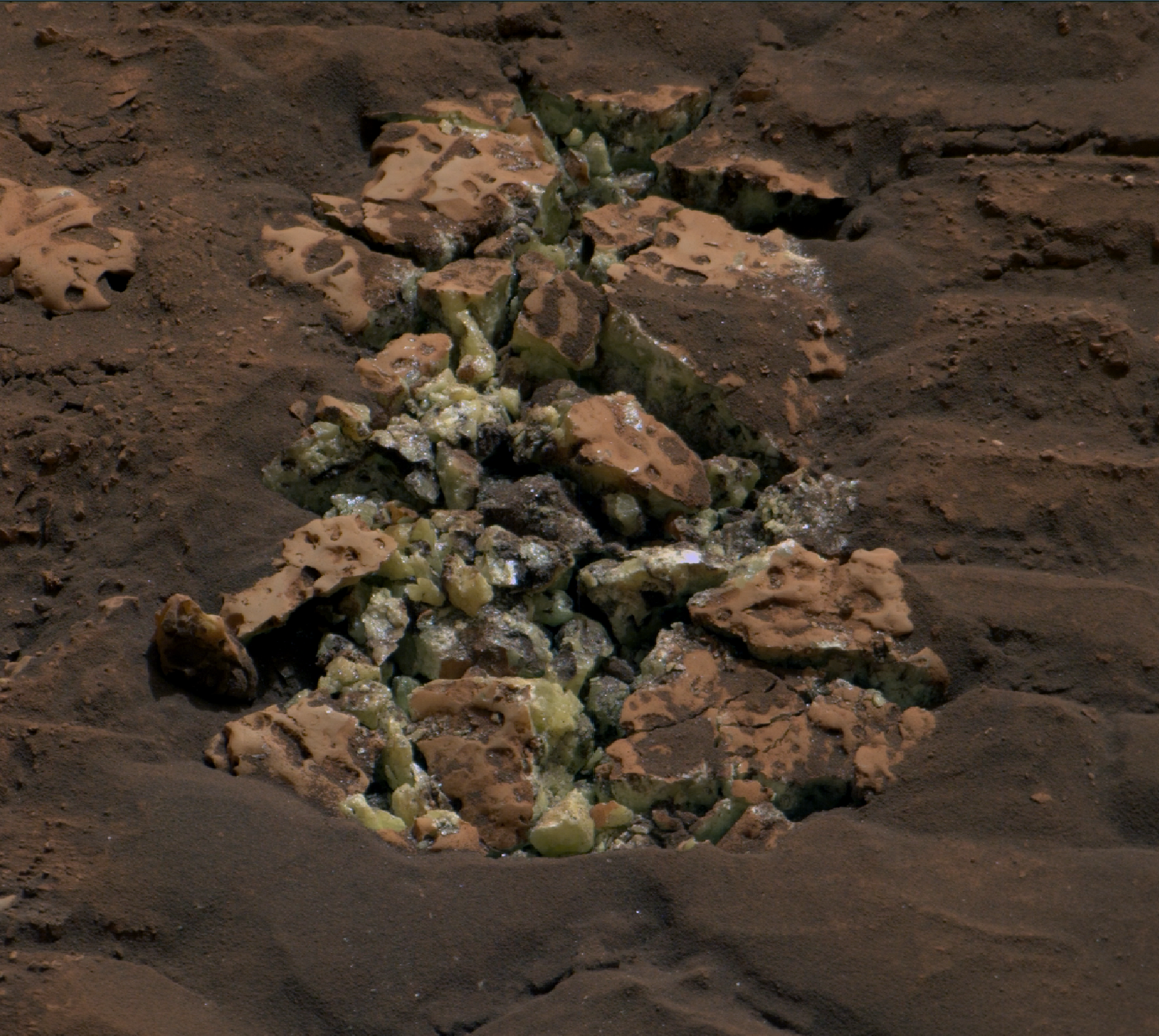NASA’s Curiosity rover discovered a surprise in a Martian rock

Scientists were astonished when NASA's Curiosity Mars rover recently ran over a rock and cracked it open, revealing the unexpected sight of yellow sulfur crystals inside it.
The rover has been exploring a region of Mars abundant in sulfates, a type of salt that contains sulfur and forms when water evaporates. While previous detections have been primarily sulfur-based minerals, this particular rock consisted of pure elemental sulfur. The connection between elemental sulfur and other sulfur-based minerals in the area remains unclear.
The discovery was made possible by the efforts of several people, including three from the Department of Earth, Environmental, and Planetary Sciences at Washington University in St. Louis. Senior Research Scientist Scott VanBommel, Staff Scientist Abigail Knight, and postdoctoral research associate John Christian, who are affiliated with the McDonnell Center for the Space Sciences, are members of NASA's Curiosity Mars rover and Alpha Particle X-ray Spectrometer (APXS) teams. Their analyses and models of APXS spectra obtained from these rocks confirmed that the observed results are consistent with native sulfur, marking the first such discovery on Mars.
Contrary to the popular association of sulfur with the smell of rotten eggs, elemental sulfur itself is odorless. It forms under specific conditions that the scientists have not yet linked to the geological history of this location. And Curiosity found a large area of bright rocks resembling the one it crushed.
This latest discovery adds to the growing list of findings made by Curiosity as it explores Gediz Vallis channel, a groove along the 5-kilometer-tall Mount Sharp. Each layer of the mountain represents a distinct period in Martian history. Curiosity's primary objective is to investigate the locations and periods in which the planet's ancient terrain might have offered the necessary conditions for microbial life to emerge, if it ever existed on Mars.




